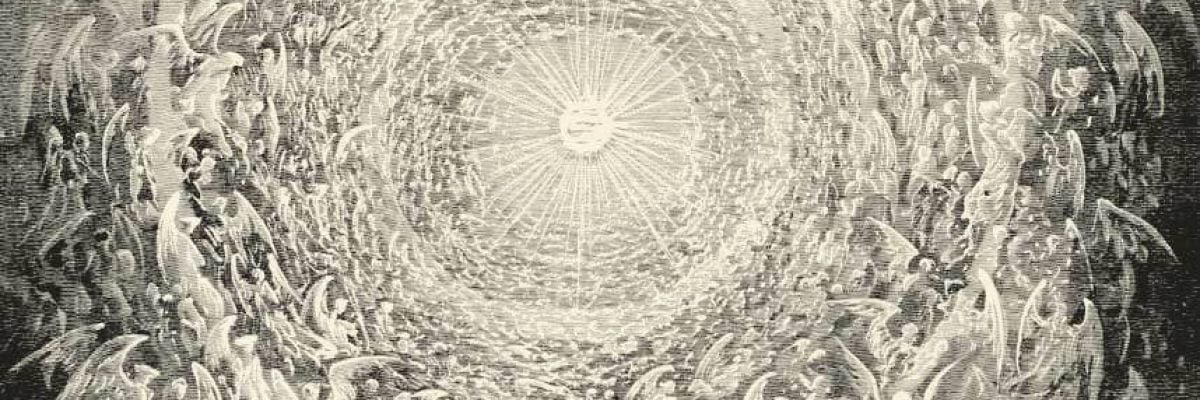
In the Divine Comedy, Dante is guided through the heavens by his courtly love, Beatrice.
These heavens are based on the astronomical ideas of the day, and she takes him through nine of them before they arrive at the ultimate dwelling place of God.
The idea that there are multiple heavens is not a concept that originated with Dante. Various ancient sources, including passages in the Bible and other early Jewish writings, speak of multiple heavens.
In fact, the Hebrew word for heaven—shamayim—is dual in number, suggesting two heavens, but other passages suggest more. In particular, St. Paul at one point speaks of being taken up to “the third heaven” (2 Cor. 12:2).
Other ancient sources speak of even more heavens—up to ten of them.
It is, of course, from this tendency to speak of multiple heavens that we have the expression “in seventh heaven,” meaning a supremely happy state.
Can we shed further light on the number of heavens?
St. Paul’s Third Heaven
At first glance, St. Paul’s reference to “third heaven” might seem to provide proof that there are multiple spiritual realms, but this is not as certain as it seems.
In the biblical languages, the words for heaven are also the words for sky, and it may be that Paul is including the physical heavens in his count.
Specifically, it has been suggested that he may be envisioning the first heaven as the “atmospheric” heaven inhabited by the birds, and the second heaven as the “celestial” heaven inhabited by the stars. The third heaven would then be the “empyrean” heaven or dwelling place of God.
If so, when he speaks of being caught up to the third heaven, he simply means being caught up to the presence of God, and the passage does not indicate that there are multiple spiritual realms in heaven.
The Core Insight
The core insight behind the depictions of multilayered heavens is that heaven is not a single state in which all saints and angels are equal and all people receive the same reward. It’s more complex than that.
The same insight is behind the way that the rewards of the saints have been depicted historically.
In his book Eschatology, the future Pope Benedict XVI wrote: “The Scholastics took these insights further and gave them systematic form. Drawing, in part, on extremely venerable traditions, they spoke of the special ‘crowns’ of martyrs, virgins, and doctors. Today, we are rather more circumspect where such assertions are concerned. It is sufficient to know that God gives each and every person his fulfilment in a way peculiar to this or that individual, and that in this way each and all receive to the uttermost” (Eschatology, 236).
In the same place, he linked the individual’s unique experience of heaven to the passage in Revelation where Jesus promises to those who remain faithful to the end, “I will give him a white stone, with a new name written on the stone, which no one knows except him who receives it” (Rev. 2:17; see Eschatology, 235).
Despite its presence in a good deal of Judeo-Christian literature, the idea that there is a specific and fairly small number of spiritual heavens is not something that the Church teaches.
Instead, it teaches the core idea that this represents—that heaven is experienced differently by individuals, based on what they did in life and how much they have opened themselves to God’s love.
This blog post is taken from an upcoming article in the July-August issue of Catholic Answers Magazine. To read the full version, as well as other faith-building articles, you should click here to subscribe to Catholic Answers Magazine.



